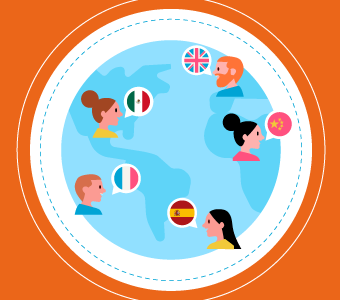There is a lot of vocabulary related to countries and nationalities. Here we will teach you how to build basic sentences to describe people’s origins so that when you meet someone, you can keep a conversation going. One important thing to remember is that nationalities in Spanish are written in small letters, so unlike English.
Gender and number agreement
Nationalities are considered adjectives, so they must match with noun gender (masculine and feminine) and number (singular and plural). In essence, nationality and gender will depend on the subject. To give you an idea, “Ana is Peruvian.” – “Ana es peruana.” or “Paul is Peruvian.” – “Paul es peruano.”
Neutral nationalities
Not many people know that there are neutral nationalities in Spanish that can be used for both men and women. These words are identified as they often end in -e. This is the case of “American” – “estadounidense” or “Costa Rican”- “costarricense”
Useful questions and verbs
When people talk about nationalities and countries, they usually ask questions like “Where are you from?” – “¿De dónde eres?”, “What is your nationality?” – “¿Cuál es tu nacionalidad?” or else “What country are you from?” – “¿De qué país eres?”. In addition to this, when Spanish speakers refer to nationalities and languages it is typical of them to use some verbs like: “nacer” – “to be born”, “vivir” – “to live ” y “crecer” – “to grow up”. Take for example: “Nací en España pero crecí en Chile y ahora vivo en Los Estados Unidos” > “I was born in Spain, but I lived in Chile and now I live in The United States”.
Now that you know more about countries and nationalities, you are able to start a conversation and put everything into practice. At Bright Lingua, you can attend Spanish classes well designed to develop your communication skills according to your purposes.


